This clinical case describes the management of a 69-year-old man who sustained an acetabular fracture after a bicycle fall. His treatment was complicated by a massive pulmonary embolism, preventing immediate surgical intervention.
This case highlights the complexities and outcomes associated with delayed surgical management in acetabular fractures complicated by severe medical conditions.
- Male, 69 ans
- Fracture of the anterior acetabulum after a bicycle fall
- Transferred to a peripheral hospital for internal fixation
- Massive pulmonary embolism requiring curative anticoagulation for 3 months with impossibility of acute surgical management
- Orthopedic treatment 6 weeks bedridden
Images the day of the trauma
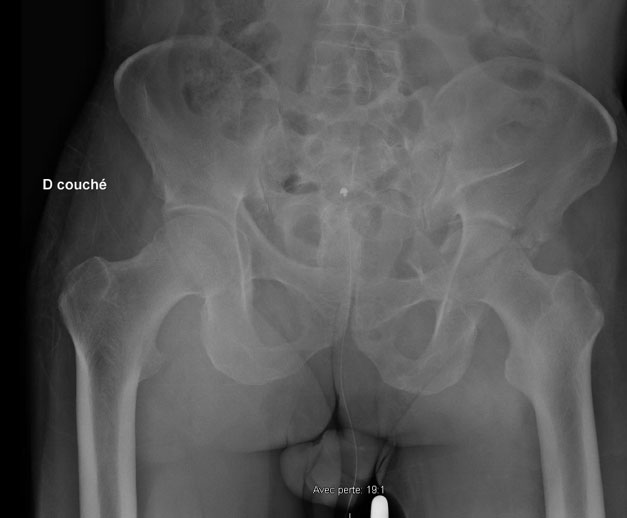
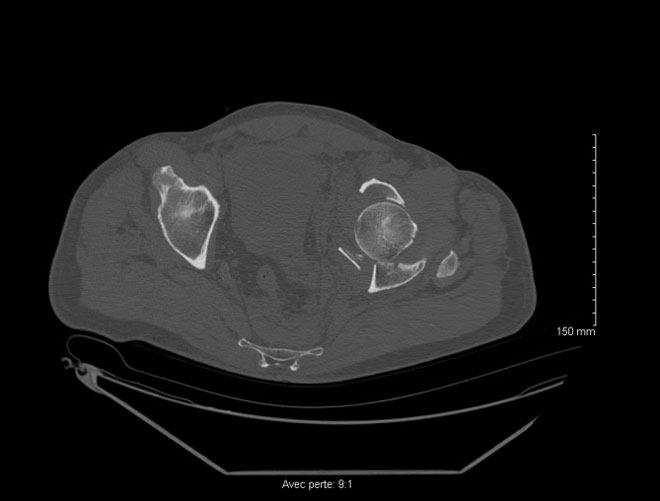
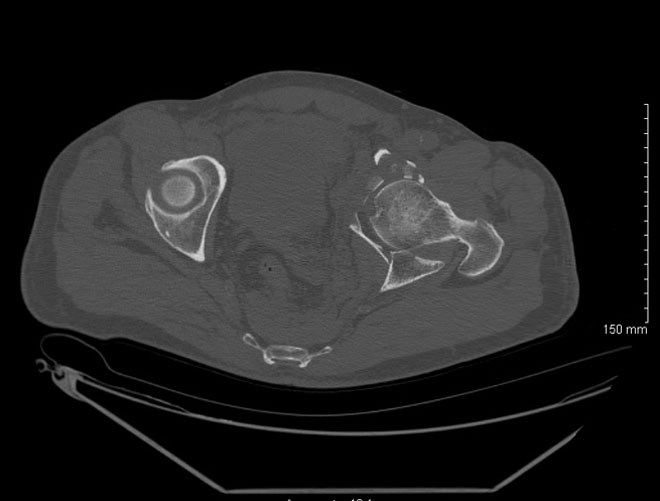
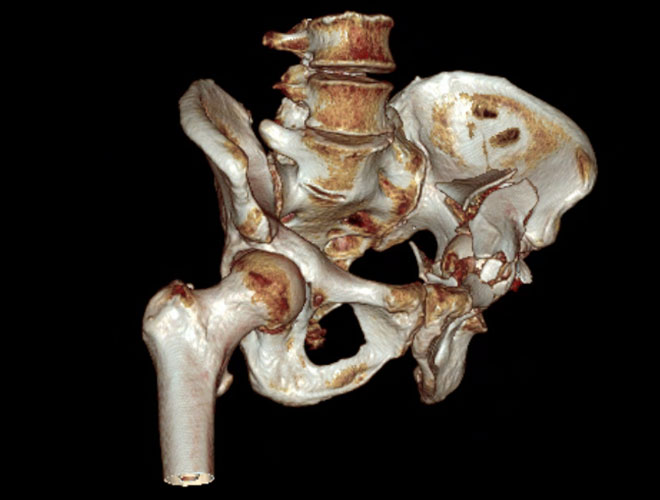
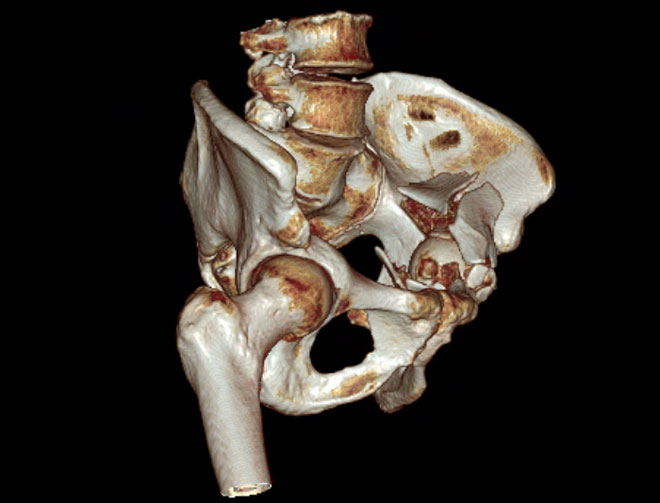
3 months after the trauma
The patient walks with full weight bearing with 1 crouch
- 60/20/-10/ 30
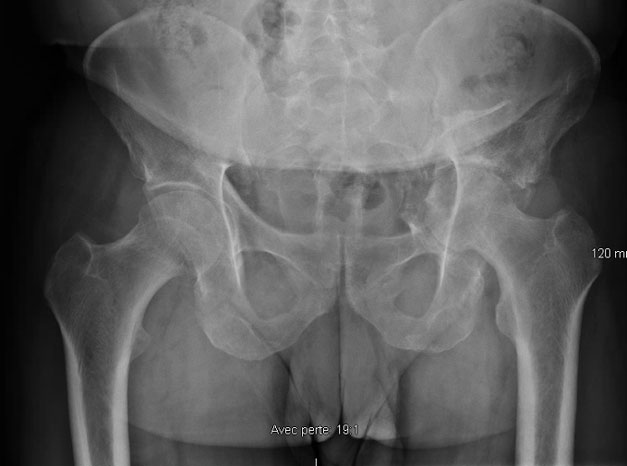
In this case, it was decided to perform a THA at 3 months post-traumatic: the implants used were an Optymis stem (Mathys) associated to a Trident II modular cup (Stryker) in order to stabilise it with screw. An autologous graft behind the funds by femoral head was also done
Post-operative X-Ray
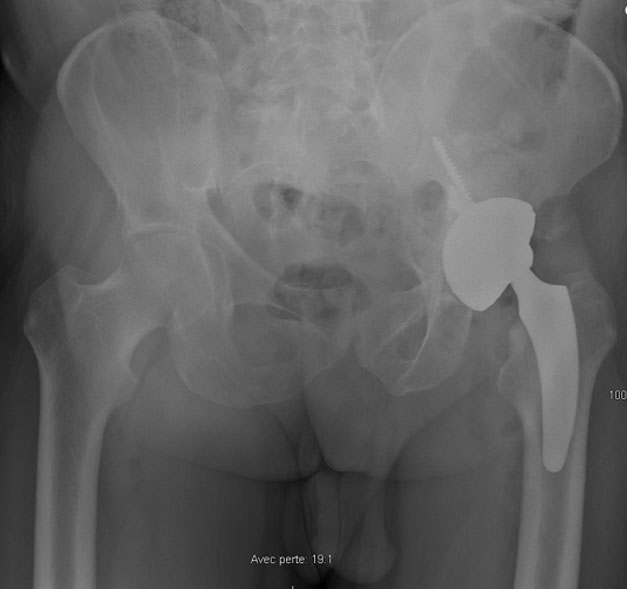
Postoperative imagery at 6 weeks
- 80/30/0/30
- Walks with 1 crouch
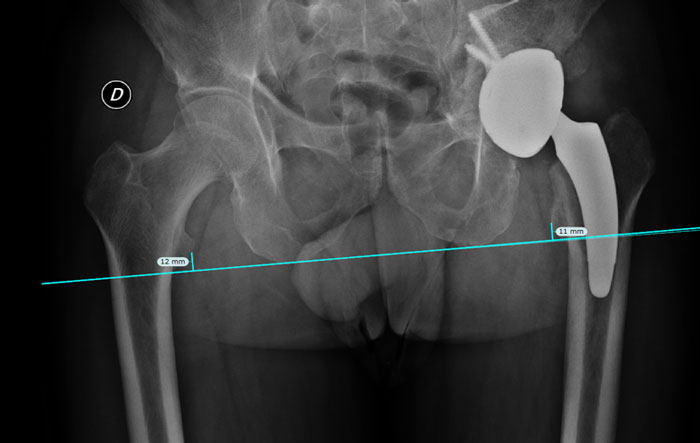
What parameters are important to restore in the event of patient surgery?
- ✔️Restoring center of rotation of the hip
- ✔️Restoring symmetrical lower limb length
Sariali E, Klouche S, Mamoudy P. 2012. Investigation into three dimensional hip anatomy in anterior dislocation after THA. Influence of the position of the hip rotation center. Clin Biomech 27: 562–567.
Which type of implant would you use ? How do you manage bone loss ?
- ✔️ Standard non cemented acetabular cup with screws and bone grafting
Acetabular reinforcement rings (Müller, Ganz, Kerboull cross or ilio-ischiatic cages (Burch-Schneider)) combined with allograft bone have been the preferred solutionfor many years but these techniques have a high failure rate (50% at 3.3 years or 60% at 6.9 years)`
Reina N. Periprosthetic acetabular fractures. Orthop Traumatol Surg Res. 2025 Feb;111(1S):104068. doi: 10.1016/j.otsr.2024.104068. Epub 2024 Nov 22. PMID: 39581492.


Comments
(No subject)
Great